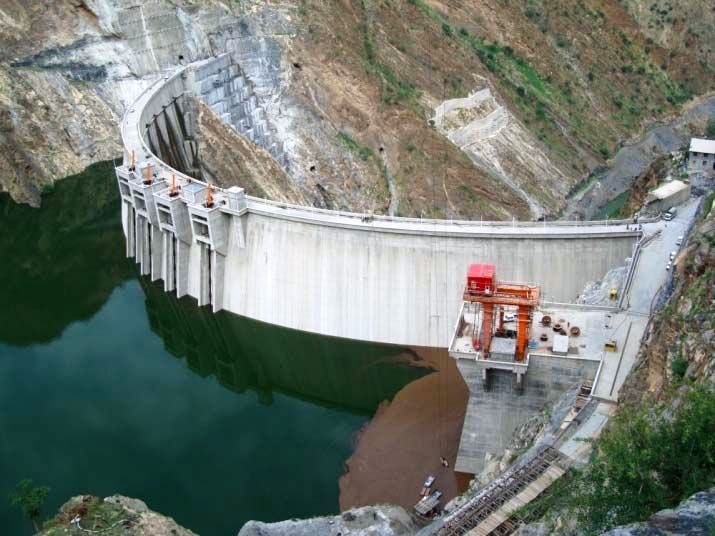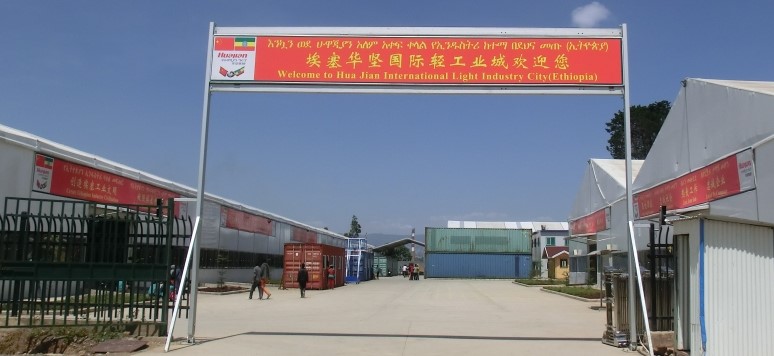By Timothy Sibasi, freelance writer based in Africa
The contacts between China and Ethiopia did not start today, but have been ongoing for the past decades and can be even traced back to thousands of years earlier...

China Ethiopia historic ties
In the footsteps of historic ties between the two countries, it’s not known when China and Ethiopia first made direct contact, the Sinologist A. Hermann believed that a live rhinoceros arrived at the court of Chinese Emperor Ping of Han Dynasty from the country of the “Agazi” or “Agazin” between AD1-6, which came from the Horn of Africa as a present for Ethiopia.
Ethiopian expert Richard Pankhurst is convinced that by the Tang Dynasty (AD618-907), “the Chinese were acquainted with at least part of the Horn of Africa and were trading indirectly with the Somali coast.”
From that period on-wards, China is believed to have traded not only with Ethiopia and the Horn but with natives of the Eastern African coast, obtaining elephants’ tusks, rhinoceros horns, pearls, the musk of the civet cat, ambergris and slaves. From Yuan Dynasty (AD1271-1368) the Chinese began to increase trade with Africans, which is attested not only with contemporary documents, but from archeological findings of Chinese coins and porcelain.
China’s modern relations with Ethiopia started when China, along with other five nations, namely, Mexico, New Zealand, the Soviet Union, the Republic of Spain and the United States, did not recognize the Italian occupation of Ethiopia and supported its independence.
But this didn’t seem to help boost the bilateral ties, as the relations at the time between China and Ethiopia were poor during the reign of Emperor Haile Selassie, when Ethiopia was more inclined to the Western powers during the Cold War.
Genesis of official contacts between China and Ethiopia
After the visitation of Chinese Premier Zhou Enlai to Ethiopia in January 1964, the Ethiopian Emperor Haile Selassie visited Beijing in October 1971, he was received by Chairman Mao Zedong. Qian Qichen, China’s vice-premier and minister of foreign affairs visited Ethiopia in July 1989, January 1991 and January 1991 and January 1994 respectively. And in May 1996, the Chinese President Jiang Zemin visited Ethiopia.
Five years later in 2001, Ethiopian deputy foreign minister visited Beijing and during his visit he expressed support for the “One China” principle. In December 2003, Chinese Premier Wen Jiabao made a return visit to Ethiopia to attend the opening of the China-Africa Cooperation Forum.
In December 2004, the heads of the Ethiopian and Chinese legislatures met in Beijing and in a joint statement said that the two countries wished to expand all aspects of cooperation. This was followed in May 2007 by a state visit of China’s Assistant Minister for Commerce, Wang Chao to Addis Ababa, Ethiopia’s capital to sign a debt relief agreement worth US$ 18.5 million.
In February 2008, the Chinese minister of construction met his counterpart in Addis Ababa, and re-emphasized the commitment of the two governments to further cooperation. The Ethiopian minister welcomed the involvement of Chinese construction companies in improving Ethiopian infrastructure. In November 2008 the chairman of the standing committee of China's National People’s Congress visited Ethiopia and met senior Ethiopian officials and political leaders including President Girma Wolde-Giorgis and discussed ways to strengthen economic cooperation.
The agreements between China and Ethiopia include agreement for Economic and Technological Cooperation (1971, 1988 and 2002); Trade Agreement (1971, 1976); Trade Protocol (1984, 1986, and 1988); Agreement for Trade, Economic and Technological Cooperation (1996) and Agreement for Mutual Promotion and Protection of Investment (1988). In May 2009 the two countries signed an agreement to eliminate double taxation, expected to boost trade and investment.
Ethiopia harnessing big from her economic relations with China
Ethiopia’s economic relationship is well multi-faceted. Between 2000 and 2014, China provided over US$12 billion in loan finance, which is usually tied to infrastructure projects undertaken by Chinese firms.
Apparently, there’s growing Chinese investment in the Ethiopian economy, while imports of cheap consumer goods from China stood at US$3.4 billion in 2015, which greatly exceeded exports from Ethiopia to China at US$380 million in 2015.
Ethiopia's focus on infrastructure has created numerous opportunities for Chinese construction firms. Ethiopia is also a significant market for Chinese exports that will expand as Ethiopia's rapid economic growth continues.
Meanwhile, for Ethiopia, Chinese finance provides critical support for the government's legitimacy, as electricity, transport, and employment opportunities continue to expand, stimulating economic growth and helping promote exports to other countries. Local people have also benefited from more convenient transportation, better job opportunities and improved living standards.
Infrastructure Loans
The Chinese government has provided large loans to Ethiopia, of which some are concessional with a grant element above 25 percent. These are all tied to construction projects to be undertaken by Chinese enterprises such as the Addis Ababa ring road opened in 2003.

The Tekeze Hydro Power Dam constructed in 2007 and completed in 2009 by China’s Sino Hydro Corporation. (Photo/Timothy Sibasi)
Some Chinese-built projects are financed by the Ethiopian government. In 2002, the Sino Hydro Corporation started work on the estimated US$224 million Tekeze hydroelectric project with a 607-foot (188-meter) dam on the Tekeze River, which was supposed to be completed in 2007 but due to challenges involved at the time it was completed in 2009.
Investment and trade
Exports from Ethiopia to China have grown from negligible levels before 2000 to around US$130 million in 2006, primarily in raw materials such as sesame seeds and partially finished leather. Meanwhile, exports from China to Ethiopia have grown from under US$50 million in 1996 to US$430 million in 2006, including low-priced clothing, machinery and electronics equipment. The Ethiopian government has encouraged imports, purchasing Chinese equipment and supplying it to local construction and manufacturing firms on a lease-to-buy basis.

Chinese investors in Ethiopia. Isn’t it a perfect match? (Photo/Timothy Sibasi)
Trade continues to grow rapidly. By 2015 bilateral trade had grown to US$3.8 billion, with Ethiopian exports encouraged through special quota and tariff arrangements on many goods. In a 2017 report, McKinsey & Company describes Ethiopia as one of China’s “robust partners,” in Africa, encompassing the highest level of strategic engagement between China and an African economy.
It was reported by the China-Africa Research Initiative at Johns Hopkins University’s School of Advanced International Studies that Ethiopia received US$10.7 billion in loans from China from 2010 to 2015.
(The opinions expressed here do not necessarily reflect the opinions of Panview or CCTV.com. )

Panview offers a new window of understanding the world as well as China through the views, opinions, and analysis of experts. We also welcome outside submissions, so feel free to send in your own editorials to "globalopinion@vip.cntv.cn" for consideration.
















